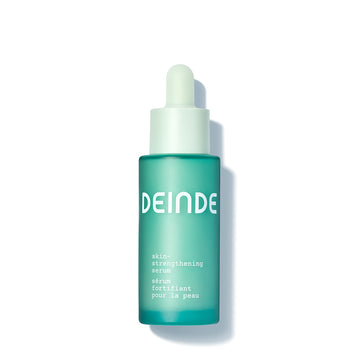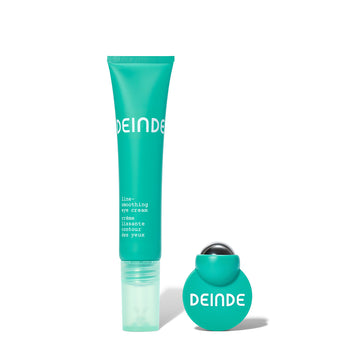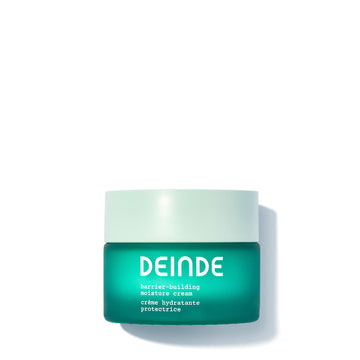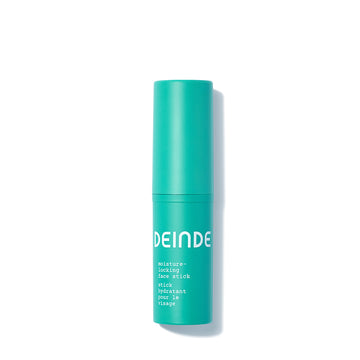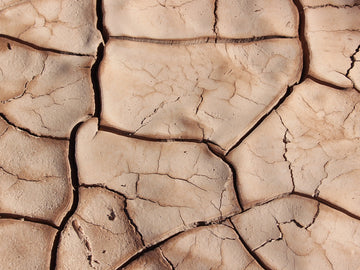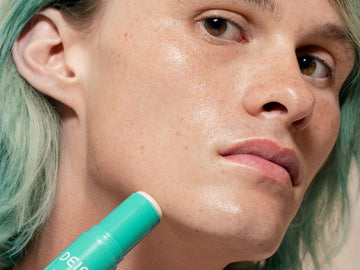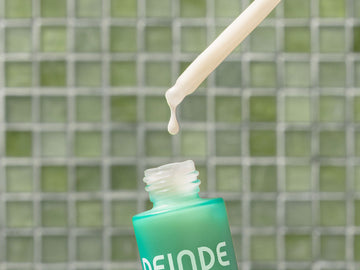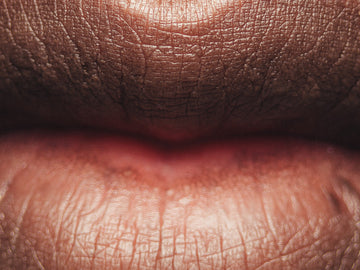
Why Is My Skin Dry Even After Moisturizing?
There’s nothing more perplexing than putting on moisturizer and still feeling like your skin is as dry as the Sahara Desert. Similar to the elusive missing socks and the stray hairbands of the world, you may have found yourself asking your moisturizer: where on earth did you disappear?
Dry skin is more than a surface-level concern: it’s a complex issue that can impact our comfort, confidence, and overall well-being. Despite efforts to hydrate and nurture skin, if you’re still feeling that persistent dryness, it’s time to look beyond surface-level solutions. There’s likely a root cause that you’re not addressing — and slathering layers of moisturizer on top of each other in your skincare routine won’t help.
What causes dry skin?
Skin exists within a duality: constantly navigating the balance between being hydrophilic (water-attracting) and lipophilic (drawn to lipids). This means that the skin has a fundamental need for a blend of water and lipids for optimal functionality.
When this balance is disturbed, skin acts out and can become dry. Common culprits, like harsh cleansers, fragrances, and over-washing, strip away natural oils. This compromises the skin’s natural moisture and protective barrier, making it susceptible to water loss and sensitive to environmental stressors. Dehydration can lead to pronounced fine lines and sunken eyes, as well as a dull and lackluster complexion. This is because adequate hydration flushes toxins and promotes fluid movement through the capillaries. Certain medications can contribute to dry skin by interfering with moisture retention. Existing in harsh climates (dry, windy, sunny) can also interrupt skin’s hydrophilic state and lead to skin dryness.
One of the most overlooked root causes of dehydrated skin is water quality. This refers not only to the water we drink, but also the water used while showering and rinsing. If your water is hard, meaning it contains higher levels of minerals like calcium and magnesium, it can be difficult for the skin to hydrate effectively as these minerals create a barrier on the skin. A map of water hardness can be viewed at the United States Geological Society website. Other variables, like pH levels, chlorine, and temperature, can strip the skin of its natural oils. Taking hot showers, for example, can also contribute to dry skin — hot water can damage the skin’s surface. Water quality can be remedied by filters for showerheads, and increasing your water intake can help hydrate your skin from the inside out.
What is the science of skin hydration?
Our body is intelligent and naturally produces hydration through a number of mechanisms. External factors, lifestyle, and environmental stressors often disrupt this process. Weather, exposure to pollutants, and the use of harsh cleansers can strip and interrupt the skin's ability to retain moisture levels. In addition, aging leads to a reduction in sebum production and a decline in your skin’s overall hydration levels.
To understand why we reach for moisturizing products is to understand the key players that keep the skin hydrated —
-
Stratum Corneum → As the outermost protective layer of the skin, the integrity of the stratum corneum is critical for maintaining hydration and overall skin health. Bringing in external moisturizers helps replenish the lipid matrix, preventing excessive water loss and strengthening the skin barrier, also known as your skin’s natural moisture barrier.
- Natural Moisturizing Factors (NMFs) → NMFs, like amino acids and urea, support the water-binding character of the stratum corneum. As environmental stressors or aging can deplete these levels, external hydration plays an important role in maintaining optimal skin moisture.
- Sebaceous Glands → Sebaceous glands produce sebum, an oily substance that creates a protective film on the skin to prevent water evaporation. If environmental factors or skincare habits strip away natural oils and interrupt the skin’s lipid balance, external hydration helps restore water content and maintain healthy skin.
- Keratinocytes → As the predominant cells in the epidermis, keratinocytes produce lipids like ceramides to contribute to the formation of the skin’s protective lipid barrier. Incorporating a moisturizer reinforces the skin’s lipid content, especially for skin that is aging or constantly exposed to harsh environmental conditions.
-
Filaggrin → This is the key protein that breaks down into amino acids through proteolysis, which contributes to the NMF and skin hydration. For skin that is influenced by genetic factors, external moisturizers fill in hydration gaps.
- Hyaluronic Acids → This acid is naturally present in the skin but declines with age or if exposed to harsh weather, UV radiation, pollution, or excess stress. Bringing in external moisture enhances the skin’s moisture retention and helps attract and hold water molecules.
- Blood Vessels → Blood vessels supply nutrients and oxygen to skin cells, supporting their function. Inadequate circulation, chronic low-grade inflammation, or aging can impact this supply — bringing in external moisturizer adds necessary hydration.
What role does moisturizer have?
Moisturizers are formulated to hydrate and maintain the skin’s natural barrier. Depending on the ingredients, moisturizers prevent water loss from the skin, create a protective layer, and encourage hydration. Moisturizers support the natural moisturizing factors (NMFs) including amino acids and urea by providing a supplementary layer of hydration to complement and reinforce existent NMFs.
These formulations often contain humectants like glycerin and hyaluronic acid, which attract water molecules and bolster overall hydration levels. Humectants are what are known as hygroscopic, meaning they attract and hold water molecules. Glycerin, commonly used in skincare formulations, has a molecular structure that easily forms hydrogen bonds with water molecules. When used topically, glycerin is a magnet for water. Hyaluronic acid equally has exceptional water retention. With a large molecular structure, it can hold a significant amount of water and attract molecules from both the environment and deeper levels of the skin.
Some moisturizers contain emollients (oils and butters) that work to soften and smooth the skin by filling in gaps between skin cells. As a reminder, the outermost layer of the skin is composed of corneocytes — flat, dead skin cells — dispersed within a lipid matrix. The molecular similarity between the skin’s lipid matrix and emollients allows them to fill in spaces between corneocytes, physically smoothing the skin’s surface. By creating a layer, emollients contribute a more robust protective barrier, retain essential moisture, and reduce transepidermal water loss.
Excessive use of moisturizers can potentially disrupt the skin’s natural processes and ability to self-regulate. Overreliance can hinder the natural exfoliation process, as skin is tricked into shedding less of its outer layer thanks to continuous hydration.
What are some common moisturizing mistakes?
There is such a thing as too much of a good thing. Skin has only so much capacity to take in external moisture. As a reminder, the idea behind moisturizing is to repair the lipid barrier and prevent transepidermal water loss so skin feels smooth and hydrated. Some common moisturizing mistakes include:
→ Overuse of Harsh Cleansers
If the skin’s natural oils are excessively stripped, the skin barrier becomes compromised, leading to increased transepidermal water loss. This can contribute to drier, flaky skin. Choosing a cleanser with a balanced pH and mild surfactants cleanses without disrupting the skin’s protective layer.
→ Choosing Incorrect Products
Consider your skin type when reaching for moisturizer. For example, oily skin may benefit from oil-free, non-comedogenic formulations to avoid clogged pores, while dry skin prefers rich, emollient moisturizers to ease skin concerns like flaking.
→ Lack of Exfoliation
Without exfoliation, dead skin cells build up on the surface and create a barrier that blocks the absorption of moisturizing products.
What Are Some Proactive Steps Beyond Moisturizing?
Skincare products are formulated to encourage stronger barrier functions and skin renewal.
This becomes difficult to do if skin exists in a dehydrated state. When the skin barrier is compromised, whether by genetics, lifestyle choices, or products, creating an environment to support skin that needs a bit extra TLC is a good place to start.
- Using a humidifier adds moisture to the air, helping maintain the skin’s natural balance while reducing the likelihood of dehydration. Humidifiers may also alleviate dryness and irritation.
- Diet is everything: healthy fats, like in avocado, help support the skin’s natural barrier function, while water-rich, fresh foods can directly contribute to internal moisture levels.
- Sleep does wonders. Adequate sleep allows the body to undergo essential repair and regeneration processes. Skin increases in permeability during deep sleep, highlighting the benefits of applying products before bed.
Studies cited:
- Impact of Water Exposure and Temperature Changes on Skin Barrier Function | PMC
- Skin Epidermis and Barrier Function | PMC
- Anatomy, Skin (Integument), Epidermis - StatPearls | NCBI Bookshelf
- Dry skin in dermatology: a complex physiopathology | NCBI
